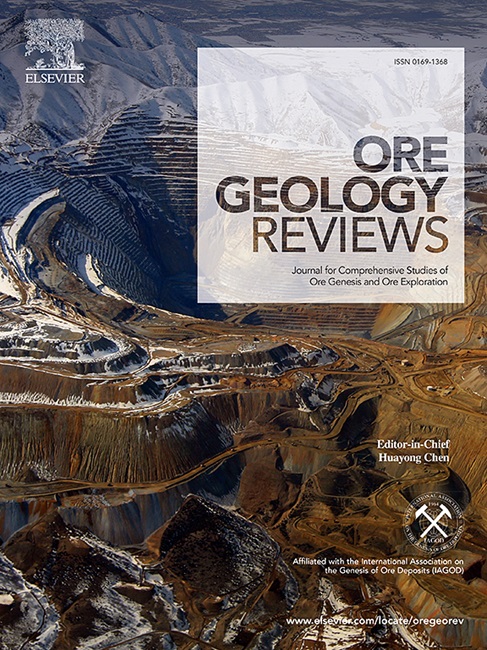Evolution of alkaline magmas and enrichment of rare earth elements: Insights from the geochemistry of apatite in the Saima alkaline igneous complex, Liaodong Peninsula, China
IF 3.2
2区 地球科学
Q1 GEOLOGY
引用次数: 0
Abstract
Rare earth element (REE) mineralization related to alkaline magmas is an important source of REEs, and some deposits are enriched in heavy REEs (HREEs). However, the mechanisms of HREE enrichment in alkaline igneous rocks are unclear. In this study, we conducted petrographic, U–Pb geochronological, and in situ elemental and isotopic analyses of apatite in the Saima alkaline igneous complex, Liaodong Peninsula, China, the aim was to constrain the HREE geochemical behavior during alkaline magma evolution. The Saima complex consists of hornblende–pyroxene syenite, biotite syenite, syenite, nepheline syenite, and lujavrite (in order of magmatic evolution). Apatite U–Pb geochronology has yielded Late Triassic (hornblende–pyroxene syenite: 223 ± 5 Ma; biotite syenite: 220 ± 3 Ma; syenite: 219 ± 6 Ma; nepheline syenite: 219 ± 10 Ma) ages. Apatite in the hornblende–pyroxene syenite, biotite syenite, and syenite has similar geochemical compositions and textures, contains melt inclusions, and is classified as type Ⅰ apatite that formed in a purely magmatic system. Two types of apatite occur in the nepheline syenite. The type Ⅱ apatite has high Sr/Y and non-chondritic Y/Ho ratios, contains melt inclusions and scarce fluid inclusions, and is formed in a H2O-saturated magmatic system. The type Ⅲ apatite is characterized by abundant fluid inclusions and has higher Sr contents, Th/U ratios, and 147Sm/144Nd ratios than the other apatite types. It has lower light REE (LREE) contents and higher HREE contents as compared with the type Ⅱ apatite and is formed by the reaction of type Ⅱ apatite with Cl-rich fluids. The calculated REE patterns of the equilibrium melt, based on values, are different from the corresponding whole-rock geochemical data. This finding, combined with the results of a Rayleigh fractionation model, indicates that a crystal mush accumulation model can explain the generation of the Saima complex. The enrichment of volatile components (e.g., H2O) and crystal accumulation during the evolution of the magma mush were key controls on the anomalous HREE enrichment in the evolved rocks of the complex.

求助全文
约1分钟内获得全文
求助全文
来源期刊

Ore Geology Reviews
地学-地质学
CiteScore
6.50
自引率
27.30%
发文量
546
审稿时长
22.9 weeks
期刊介绍:
Ore Geology Reviews aims to familiarize all earth scientists with recent advances in a number of interconnected disciplines related to the study of, and search for, ore deposits. The reviews range from brief to longer contributions, but the journal preferentially publishes manuscripts that fill the niche between the commonly shorter journal articles and the comprehensive book coverages, and thus has a special appeal to many authors and readers.
 求助内容:
求助内容: 应助结果提醒方式:
应助结果提醒方式:


